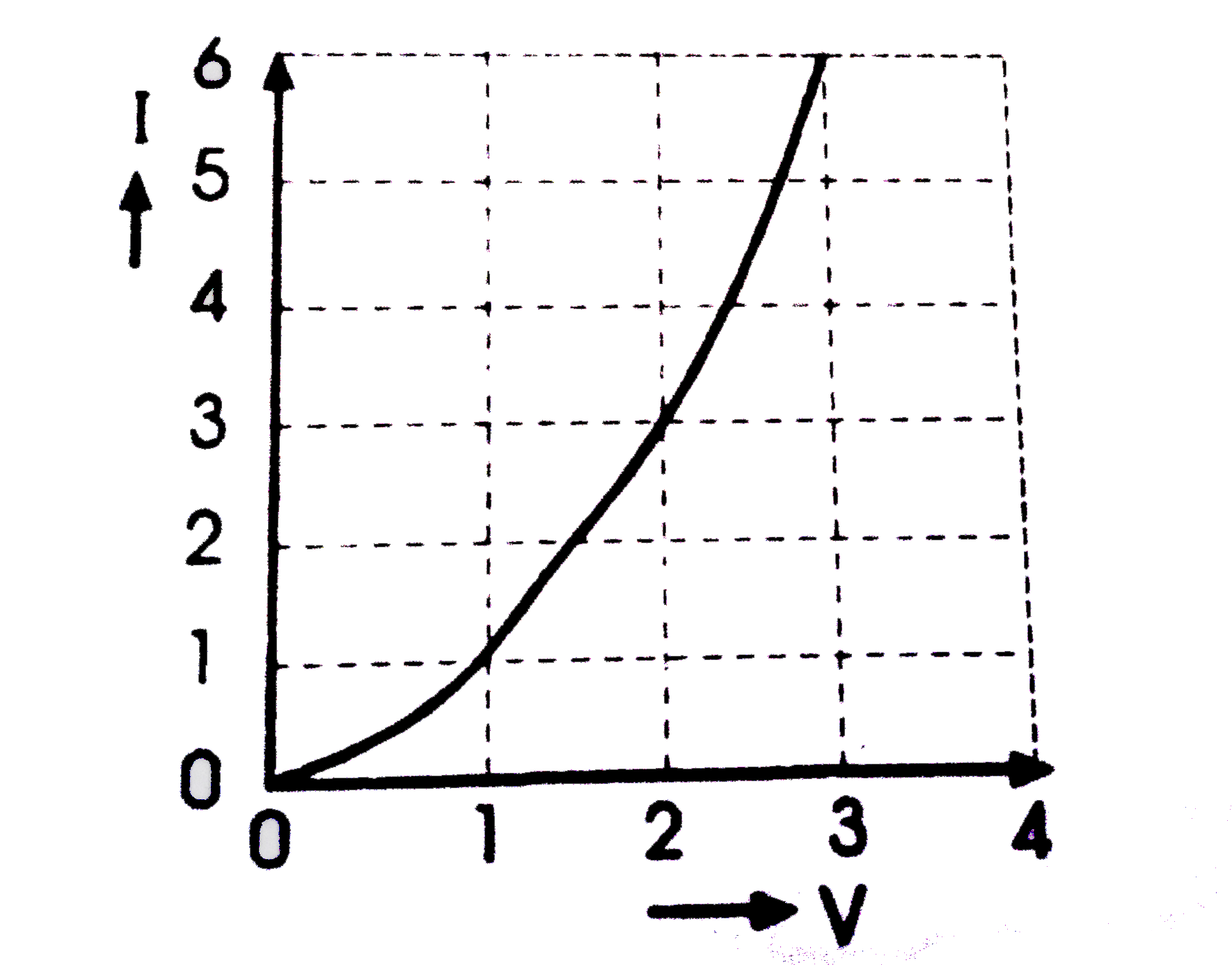(a) Six lead-acid type of secondary cells, each of emf 2.0 V and internal resistance 0.015Ω are joined in series to provide a supply to a resistance of 8.5Ω. What are the currents drawn from the supply, and its terminal voltage?
(b) A secondary cell after long use has an emf 1.9 V and a large internal resistance of 380Ω. What maximum current can be drawn from the cell? Could the cell drive the starting motor of a car?
(a) The total emf of a number of cells connected in series combination will be equal to the sum of their individual emfs.
∴ Total emf of 6 cells, E=6×2=12V
Total internal resistance in the circuit, r=6×0.015=0.09Ω
If R is the external resistance in the circuit, then the current in the circuit is given by I=ER+r=128.5+0.09=128.59=1.4A
The terminal voltage across the supply is given by: V=E−Ir
⇒V=12−1.4×0.09
=11.87V≈11.9V
(b) The maximum current will be drawn from the cell when external resistance is zero. The current drawn will be given by I=Er
Here, E= 1.9V, r=380Ω
∴I=1.9380=0.005A
Since the value of current is very small, motor of a car cannot be driven with this cell because it requires large current in a very short interval (few second) of time.
Topper's Solved these Questions
- CURRENT ELECTRICITYBOOK - MODERN PUBLICATIONCHAPTER - CURRENT ELECTRICITYEXERCISE - NCERT SOLVED (NCERT Exemplar Problems Subjective Questions)(Very Short Answers Type Questions)
10 Videos
- CURRENT ELECTRICITYBOOK - MODERN PUBLICATIONCHAPTER - CURRENT ELECTRICITYEXERCISE - NCERT SOLVED (NCERT Exemplar Problems Subjective Questions)(Short Answers Type Questions)
6 Videos
- CURRENT ELECTRICITYBOOK - MODERN PUBLICATIONCHAPTER - CURRENT ELECTRICITYEXERCISE - NCERT SOLVED (NCERT Textbook Exercises)
13 Videos
- ATOMS BOOK - MODERN PUBLICATIONCHAPTER - ATOMS EXERCISE - Chapter Practice Test
16 Videos
- DUAL NATURE OF RADIATION AND MATTER BOOK - MODERN PUBLICATIONCHAPTER - DUAL NATURE OF RADIATION AND MATTER EXERCISE - CHAPTER PRACTICE TEST
15 Videos
Similar Questions
(a) Six lead-acid type of secondary cells each of emf 2.0 V and internal resistance 0.015 Ω are joined in series to provide a supply to a resistance of 8.5 Ω. What are the current drawn from the supply and its terminal voltage ?
(b) A secondary cell after long use has an emf of 1.9 V and a large internal resistance of 380 Ω . What maximum current can be drawn from the cell ? Could the cell drive the starting motor of a car?
View SolutionA secondary cell after long use has an emf of 1.9 V and a large internal resistance of 380Ω. What maximum current can be drawn from the cell ? Could the cell drive the starting motor of a car ?
View Solution
Knowledge Check
A dry cell has an e.m.f. of 1.5V and an internal resistance of 0.05Ω. The maximum current obtainable from this cell for a very short time interval is
A30AB300AC3AD0.3AA cell of emf 2.0 V and internal resistance 0.1 Ω is connected with a resistance of 3.9Ω. The voltage across the cell terminals will be
A0.50 VB1.90 VC1.95 VD2.0 VA cell of emf 2 V and internal resistance 0.1Ω is connected with a resistance of 3.9Ω The voltage across the cell terminal will be
A1.95VB1.90VC0.50VD2.00V
(a) Six lead-acid type of secondary cells each of emf 2−0 V and internal resistance 0−015Ω are jouned in series to provide a supply to a resistance of 8−5Ω. What are the current drawn from the supply and its terminal voltage ?
(b) A secondary cells after long use has an emf of 1−9 V and a large internal resistance of 380Ω. What maximum current can be drawn from the cell ? Could the cell drive the starting motor of a car ?
View SolutionSiix lead-acid type of secondary cells, each of emf 2.0 V and internal resistancce 0.015Ω are joined in series to provide a supply to a resistance of 8.5Ω. Determine : (i) the current draw from the fupply and (ii) its terminal voltage.
View SolutionA cell emf 3V and internal resistance 0.75Ω is connected to a nonlinear conductor whose V-I g raph is shown in figure obtain graphically the current drawn from the cell and its terminal voltage.

View SolutionA cell of emf 1.5 V and internal resistance 0.5Ω is connected to a (non-linear) conductor whose V-I graph is shown in Fig. 4.36 (a). Obtain graphically the current drawn from the cell and its terminal voltage.
View SolutionThe battery of a trunk has an emf of 24 V. If the internal resistance of the battery is 0.8Ω. What is the maximum current that can be drawn from the battery?
View Solution
